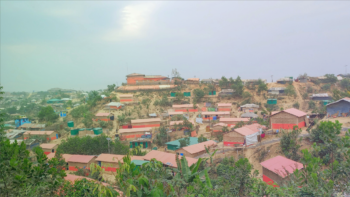

What questions banks ask during NGO due diligence, and why
How banks identify and assess potential NGO risk as part of their due diligence processes.

Banks are liable for the activities of their customers. So before they take on prospective NGO clients, banks want to understand more about NGO operations, governance, financial stability, risk management arrangements and more.
Customer due diligence
Customer due diligence is a legal requirement for regulated entities, such as banks and payment service providers. It’s to help prevent the financial system from being used to launder money and/or finance terrorism.
Sometimes also referred to as ‘know your customer’, ‘know your business’ or KYC/KYB for short, customer due diligence is the process by which a bank assesses a customer’s level of risk according to its risk-based approach.
So, in simple terms, it involves knowing your customer and, in high-risk situations, knowing your customer’s customers and perhaps even their suppliers and associates as well. Who is involved in the NGO, what type of activities does it undertake and how will it use the account?
Expect to be asked for information about your NGO, personnel and activities.
- Organizational information – the legal structure of the NGO, how long it has been operating, its mission and objectives, the programs and activities it undertakes to deliver on this.
- Management and governance – senior leaders, board directors, trustees involved in the NGO, their qualifications and experience, the governance structure and any potential conflicts of interest.
- Programs and impact – primary activities, target beneficiaries, partnerships and collaborations to deliver programs, evidence of impact.
Verification
It’s not enough for a bank or financial partner to ask for information and retain it on file. They must also verify it with reliable, independent source documents, data or information. Customer due diligence must be deep and meaningful. But also, cost-effective, flexible and proportionate. Hold that thought because we’ll return to it at the end.
Things that heighten the risks for banks are if the NGO is evasive, has contact with politically exposed trustees, donors etc., or deals with sanctioned entities.
- Evasiveness – if an NGO is reluctant or unable to reveal staff, donor or beneficiary identities, explain dealings with third parties, particularly those overseas, or why activities are conducted in a particular way, this may raise a red flag for banks.
- Politically exposed persons (PEPs) – people who hold or have held a prominent position in a country’s government, judiciary or military, their family or close associates are PEPs. Banks may take a risk-based approach to PEPs, but in most countries they must do enhanced due diligence on them, which adds to their overhead.
- Sanctioned entities – unlike with PEPs, banks must not do business with sanctioned countries, regimes, people, companies, industry sectors and so on. Sanctions lists change often and differ between countries, which makes sanctions screening a significant activity and overhead for banks.
Financial operations
The NGO sector is diverse, spanning many different aims, activities and geographies. NGOs can be victims of fraud from employees, trustees, beneficiaries etc. Or be set up fraudulently to launder money or finance terrorism.
NGOs may have complex financial operations, including multiple donors, investments and currencies. They receive high volumes of low-value donations, many in cash. Income and expenditure streams may be unpredictable, making suspicious transactions harder to identify. So, expect to be asked about your source and use of funds, and financial plans.
- Source of funds – annual budget, source of funds, including grants and donations, income and cashflow statements, any outstanding loans or credits.
- Use of funds – how funds are used for activities, justification for any loans/credits requested from the bank.
- Financial plans – budget or financial plans detailing projected income and expenditure.
Risk management and transparency
International NGOs operate in challenging environments, including worn-torn and poverty-stricken countries. They may be active across multiple jurisdictions, where oversight and technical capacity differs from their home market.
Banks and other financial partners want to understand what policies, procedures and controls NGOs have in place to prevent, detect, assess and mitigate risks. So, expect to be asked about your risk management approach.
- Risk assessment – arrangements for assessing the risks associated with NGO operations and programs, including potential reputational risks.
- Mitigating controls – the risk management practices deployed to mitigate downside risk and maximize upside opportunities, plus comply with applicable laws and regulations.
- Transparency and accountability – how the NGO documents its policies and procedures and reports to stakeholders, including donors, governments etc.
Ongoing customer due diligence
Customer due diligence is not confined to onboarding at the start of a relationship. Rather, it’s a regular, ongoing process, designed to ensure that transactions are consistent with the bank’s knowledge of the NGO, their activities and risk profile.
Anything could change in an NGO or the environment in which it operates. So, expect to be asked about many of the above points at regular intervals and/or when anything changes.
- Enhanced due diligence – more identity and verification checks, further checks into NGO history and operations, adverse media screening and enhanced monitoring.
- Monitoring – transaction and non-transactional monitoring to ensure the NGO is using the account in line with reasons given at sign-up and to manage risk.
The de-risking equation
The higher the perceived risk of an NGO, the more due diligence required. This cuts into bank profit margins. And is how NGOs get stuck in a vicious circle of ‘de-risking’.
Banks are liable for customer activities in accordance with relevant regulations. If the NGO operates in high-risk or multiple jurisdictions, the perceived risks are high and profitability low.
Banks often request additional documentation or explanations on high-risk transactions, which causes delays. It increases handling costs for banks and fees for NGOs. Because they do not necessarily have a cost-effective, flexible and proportionate way of assessing risk, banks may de-risk client relationships in certain geographies or sectors altogether.
NGOs are then forced to look for alternative ways to make cross-border transfers. This may include moving money through less transparent, traceable and safe channels, such as money service bureaux (MSBs), hawala and cash couriers.
How Inpay can help
Inpay has the appetite to service the NGO sector. Our origin story is bound up with NGOs, as we were founded following a humanitarian crisis in 2008.
We differ from other providers in having an international outlook rather than the purely domestic one of holding deposits and facilitating local pay-ins from donors.
Not all banks are willing or able to manage the risks of high-risk cross-border payments. Whereas this is our core business and competency. Inpay covers 70% of the top 17 countries receiving humanitarian aid via local bank transfer, and the remainder via international wire.
Our proprietary network of global financial institutions makes it quicker, safer and more cost-effective for NGOs to send money overseas compared to SWIFT wire transfers, MSBs or cash couriers.
Contact us at [email protected] to find out how we could help support your important work.




